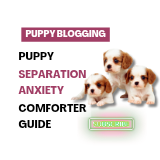Navigating Canine Aggression: A Guide for Responsible Pet Owners
- Jan 4, 2024
- 4 min read
Updated: Feb 20
Dealing with aggression in a dog can be a challenging and concerning situation for pet owners. Understanding the underlying causes, recognising signs of aggression, and implementing appropriate strategies are crucial steps toward fostering a safe and harmonious relationship with your furry companion. In this blog post, we'll explore the various aspects of canine aggression and offer guidance on what to do if your dog exhibits aggressive behaviour.

Understanding Canine Aggression:
Identifying Signs of Aggression: Canine aggression can manifest in various forms, including growling, barking, snapping, biting, or other threatening behaviours. Identifying these signs early is essential for effective intervention.
Potential Causes of Aggression: Aggression in dogs can stem from a variety of causes, such as fear, territorial instincts, possessiveness, pain, illness, or inadequate socialisation. Identifying the root cause is crucial for developing an appropriate action plan.
Immediate Steps When Your Dog Displays Aggressive Behaviour:
Prioritise Safety: The safety of everyone involved, including yourself, family members, and others, is the top priority. If your dog is displaying aggressive behavior, take immediate steps to ensure a safe environment.
Avoid Punishment: It's essential to refrain from punishing an aggressive dog. Punishment can exacerbate fear and aggression, leading to an escalation of the problem. Instead, focus on understanding and addressing the root cause.
Limit Access to Triggers: Identify and limit your dog's exposure to triggers that may be causing aggressive behavior. This may involve separating your dog from certain situations, people, or other animals until a professional evaluation can be conducted.
Long-Term Strategies for Addressing Canine Aggression:
Consult with a Professional: Seeking guidance from a professional dog trainer, behaviorist, or veterinarian is crucial. These experts can conduct a thorough assessment of your dog's behavior, identify triggers, and recommend a tailored behavior modification plan.
Implement Behaviour Modification Techniques: Behaviour modification techniques, such as desensitisation and counterconditioning, can help reshape your dog's response to specific triggers. These techniques involve gradually exposing your dog to the trigger in a controlled and positive manner.
Consistent Training and Positive Reinforcement: Consistent training using positive reinforcement is vital for addressing aggressive behaviour. Reward-based training encourages good behavior and helps your dog associate positive outcomes with appropriate actions.
Provide Mental and Physical Stimulation: Boredom and lack of mental stimulation can contribute to aggression. Ensure your dog receives ample mental and physical exercise through interactive toys, puzzles, and regular walks.
Establish Clear Boundaries: Establishing clear boundaries and rules is essential for managing aggression. Consistency in enforcing rules helps your dog understand expectations and contributes to a more structured and secure environment.
Regular Veterinary Check-ups: Schedule regular veterinary check-ups to rule out any underlying health issues that may contribute to aggressive behaviour. Pain or discomfort can be significant factors in aggressive reactions.
Practical Tips for Responsible Dog Owners:
Yellow Lead or Ribbon: Using a yellow lead or ribbon serves as a visual cue to others, indicating that your dog may require additional space. This widely recognised symbol helps communicate the need for caution and allows people to take appropriate measures when approaching.
Training and Socialisation: Consistent training and controlled socialisation are vital components of managing aggression. Gradual exposure to various stimuli, along with positive reinforcement, can help reshape your dog's responses.
Avoid Crowded Areas: When possible, avoid crowded or high-stimulus environments that may overwhelm your dog. Opt for quieter, less congested areas to reduce stress triggers.
Secure Restraint: Use secure and appropriate restraint equipment, such as a well-fitted harness or head halter, to maintain control during walks or public outings. This ensures the safety of both your dog and others.
Educate Others: Take the initiative to educate people in your community about your dog's needs. Share information about the yellow lead or ribbon and provide guidance on how to approach or interact with your dog safely.
Visible Warnings: Invest in a visible and clear warning sign or patch that can be attached to your dog's harness or leash. This serves as an additional visual cue for those in proximity.
Routine Veterinary Check-ups: Regular veterinary check-ups are crucial to rule out any potential health issues contributing to aggressive behaviour. Pain or discomfort can be significant factors, and addressing them can improve your dog's overall well-being.
Secure Home Environment: Create a secure home environment by managing access to windows, doors, and high-traffic areas. This helps minimise situations that may trigger aggression, especially in response to outside stimuli.
Use Caution with Other Animals: Exercise caution when introducing your dog to other animals. Controlled and supervised interactions with well-behaved and tolerant animals can contribute to positive socialisation.
Use a Well Fitting Muzzle: When in public, ensure your dog wears a well fitting muzzle that they have been gradually introduced to minimise their distress.
Living with an aggressive dog requires proactive and responsible measures to ensure the safety and well-being of everyone involved. Utilising visual cues like a yellow lead or ribbon, combined with professional guidance, training, and ongoing education, can help foster a more understanding and supportive community. By prioritising safety, seeking professional guidance, and implementing positive reinforcement and behaviour modification techniques, you can work towards creating a safer and more harmonious relationship with your dog. Remember, addressing aggression is a gradual process, and consistent, compassionate efforts can contribute to positive behavioural changes over time.











Comments